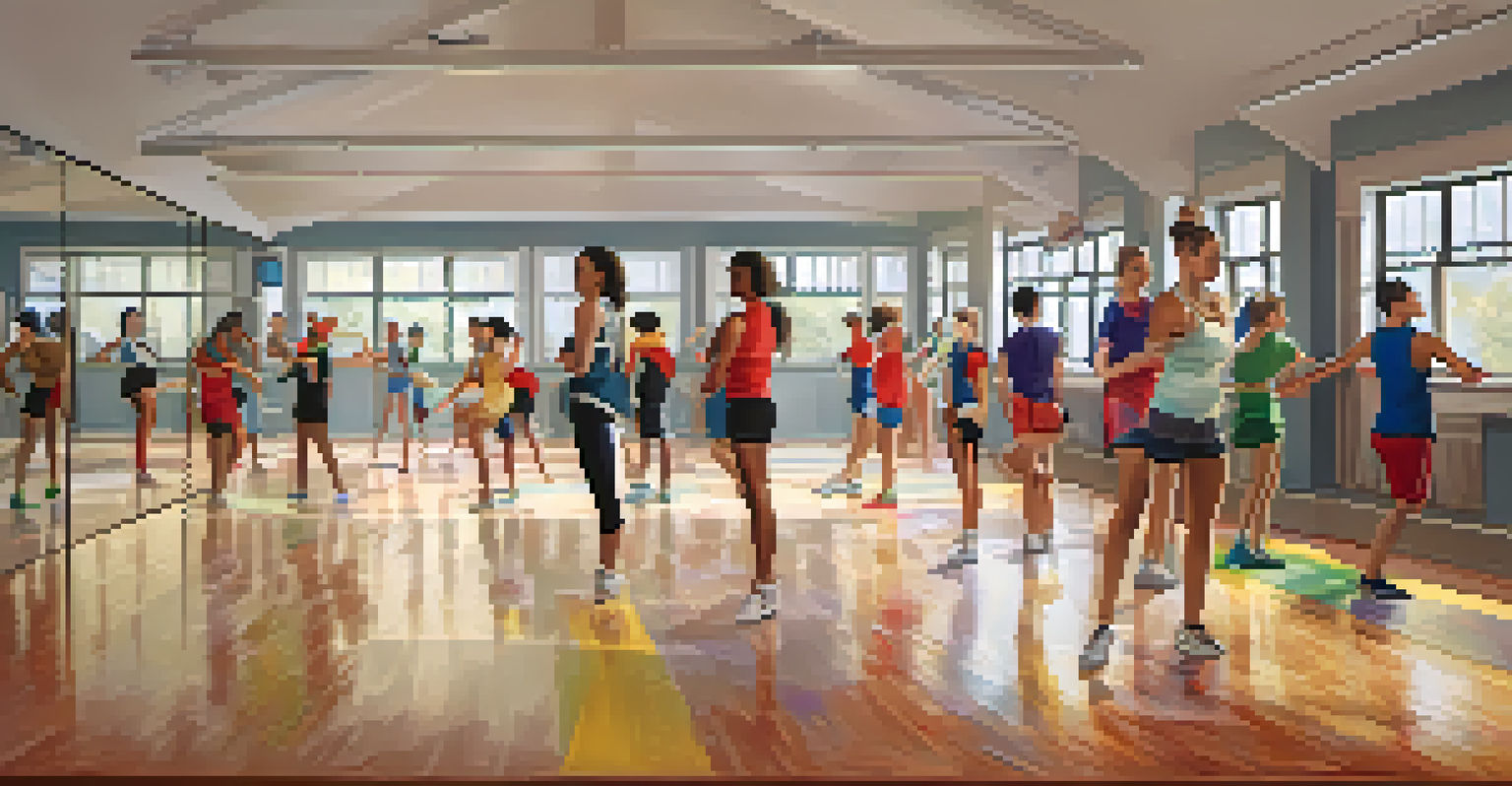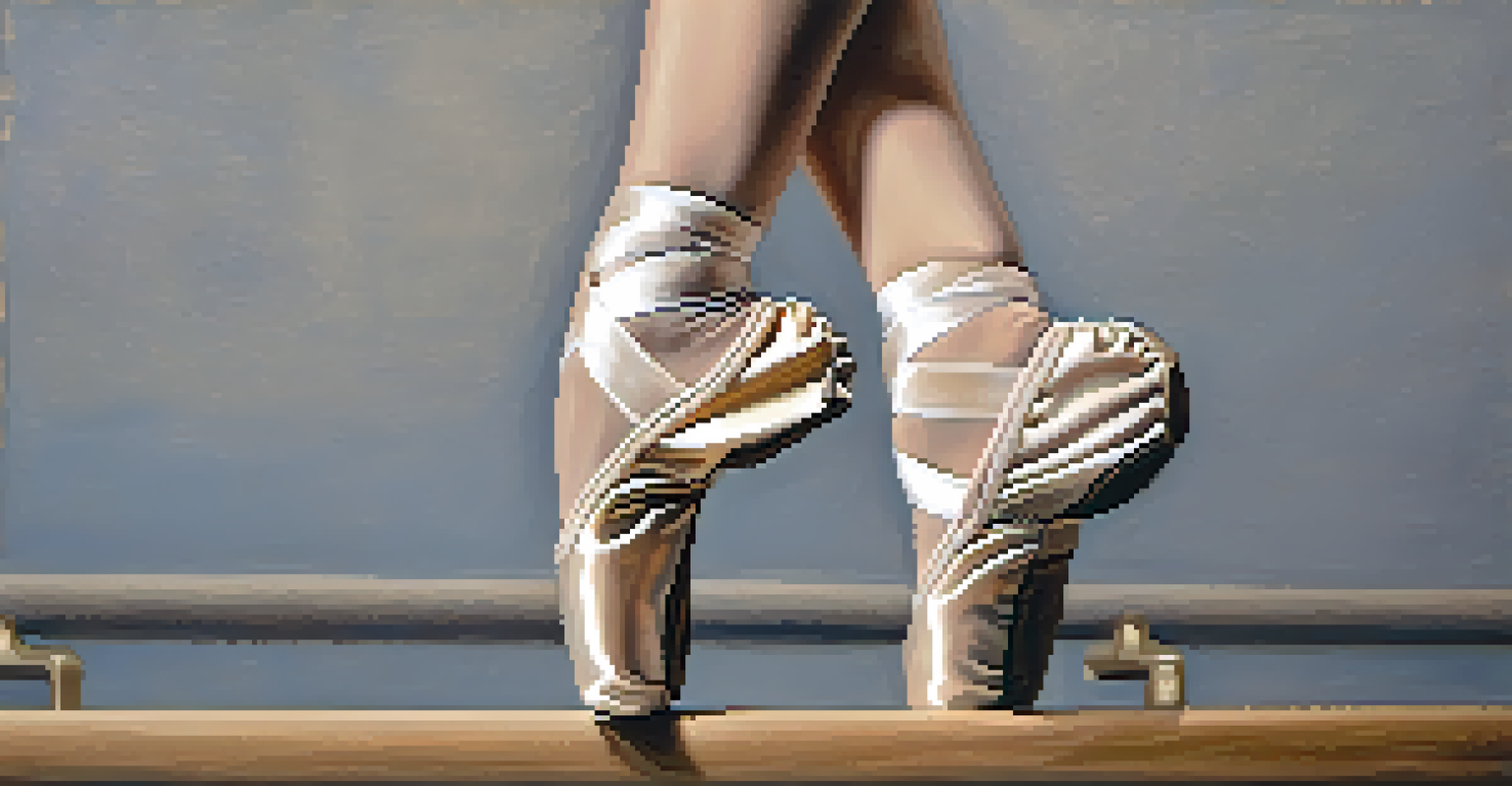The Psychology of Dance in Enhancing Athletic Performance

Understanding the Connection Between Dance and Athletics
Dance and athletics share a fundamental core: movement. Both disciplines require precision, coordination, and rhythm, which makes the crossover quite fascinating. Athletes often rely on these physical attributes to enhance their performance, and incorporating dance can provide an additional layer of training.
Dance is the hidden language of the soul.
Engaging in dance can help athletes develop better body awareness, enabling them to understand their movements more deeply. This heightened awareness can lead to improved technique and execution in their primary sport. For instance, a basketball player who practices dance may find their footwork becomes more agile and responsive.
Moreover, dance training reinforces the mind-body connection, allowing athletes to tap into their full potential. This connection is crucial, as sports performance is not just about physical prowess but also about mental clarity and focus.
The Role of Rhythm and Timing in Performance
Rhythm plays a vital role in both dance and athletic performance. Just as a dancer must feel the beat, athletes often rely on timing to achieve peak performance. Understanding rhythm can help athletes synchronize their movements with the pace of their sport, leading to more effective execution.

For example, sprinters can benefit from dance techniques that enhance their sense of timing, helping them explode off the blocks with precision. This synchronization can translate into better starts and faster races. In essence, rhythm in dance reinforces the need for timing in athletics, creating a seamless flow in performance.
Dance Enhances Athletic Performance
Incorporating dance into training can improve athletes' coordination, rhythm, and body awareness, leading to better performance in their primary sport.
Additionally, engaging with music during dance can enhance an athlete's motivation and drive. The uplifting energy from rhythmic music can lead to improved mood and increased stamina during training, making workouts feel less strenuous and more enjoyable.
Boosting Mental Resilience Through Dance
Mental resilience is a crucial aspect of athletic performance, and dance offers unique benefits in this area. The practice of dance often involves facing challenges, such as learning new choreography or performing under pressure, which can translate to sports. Athletes who embrace dance may find themselves better equipped to handle the mental demands of competition.
The only way to do great work is to love what you do.
Moreover, dance encourages a sense of creativity, allowing athletes to express themselves freely. This self-expression can lead to greater confidence, as athletes learn to trust their instincts and make quick decisions during high-stress situations. The ability to adapt and improvise is essential in both dance and sports.
Incorporating dance into an athlete's routine can also provide a mental break from traditional training. This shift in focus can prevent burnout, keeping athletes engaged and motivated while enhancing their mental toughness.
Enhancing Coordination and Balance with Dance
Coordination and balance are vital components of athletic performance, and dance is an excellent way to develop these skills. Many dance styles emphasize intricate movements that require precise control and stability. As athletes practice these skills, they can improve their overall athleticism.
For instance, a gymnast might find that incorporating ballet into their training enhances their balance on the beam. The strong emphasis on posture and alignment in dance can lead to improved performance in various sports. This cross-training method allows athletes to fine-tune their bodies for optimal performance.
Rhythm and Timing Boost Success
Understanding rhythm in dance helps athletes synchronize their movements, enhancing their timing and execution during competitions.
Furthermore, dance encourages the use of different muscle groups, promoting overall strength and flexibility. This holistic approach to training can reduce the risk of injury, allowing athletes to perform at their best consistently.
Social Connection and Team Dynamics in Dance
Dance is inherently social, often involving collaboration and teamwork. This aspect can be incredibly beneficial for athletes who thrive in team environments. Participating in dance can strengthen bonds among teammates, fostering a sense of unity and support.
For example, a soccer team that engages in group dance sessions can improve communication and camaraderie. This enhanced connection can lead to better on-field synergy, as players develop trust and understanding of each other’s movements. The joy of shared experiences in dance can translate to improved team dynamics during competition.
Additionally, the collective experience of learning choreography or routines can build resilience and teamwork. Athletes learn to support one another, celebrate successes, and navigate challenges together, creating a positive training environment.
The Importance of Creative Expression in Sports
Creative expression is often overlooked in the world of athletics, but it plays a critical role in performance. Dance offers athletes an outlet for creativity, allowing them to break free from routine and explore new ways of moving. This exploration can lead to innovative strategies on the field or court.
For example, a football player who engages in hip-hop dance might discover new footwork techniques that enhance their agility. This creative aspect can help athletes stand out, leading to unique styles that set them apart in their sport. The ability to think outside the box can be a game-changer.
Creative Expression Reduces Anxiety
Engaging in dance allows athletes to explore creativity, which can alleviate performance anxiety and lead to greater satisfaction in their sport.
Moreover, fostering creativity can reduce performance anxiety. When athletes feel free to express themselves, they may experience a greater sense of joy and less pressure to conform. This shift in mindset can lead to improved performance and overall satisfaction in their sport.
Practical Ways to Incorporate Dance into Athletic Training
Incorporating dance into athletic training doesn’t have to be complex. Athletes can start with short dance sessions during warm-ups or cool-downs, focusing on flexibility and rhythm. Simple movements can enhance their awareness and prepare their bodies for more intense workouts.
Additionally, athletes might consider joining a dance class or workshop that aligns with their interests. Whether it's salsa, ballet, or hip-hop, each style offers unique benefits that can complement their primary sport. This exploration can also serve as a fun way to cross-train and meet new people.

Finally, online dance tutorials or fitness apps can be a convenient way to integrate dance into a busy schedule. Athletes can access a variety of styles and lengths, making it easy to find something that fits their training routine. The key is to remain open-minded and willing to experiment with different forms of movement.